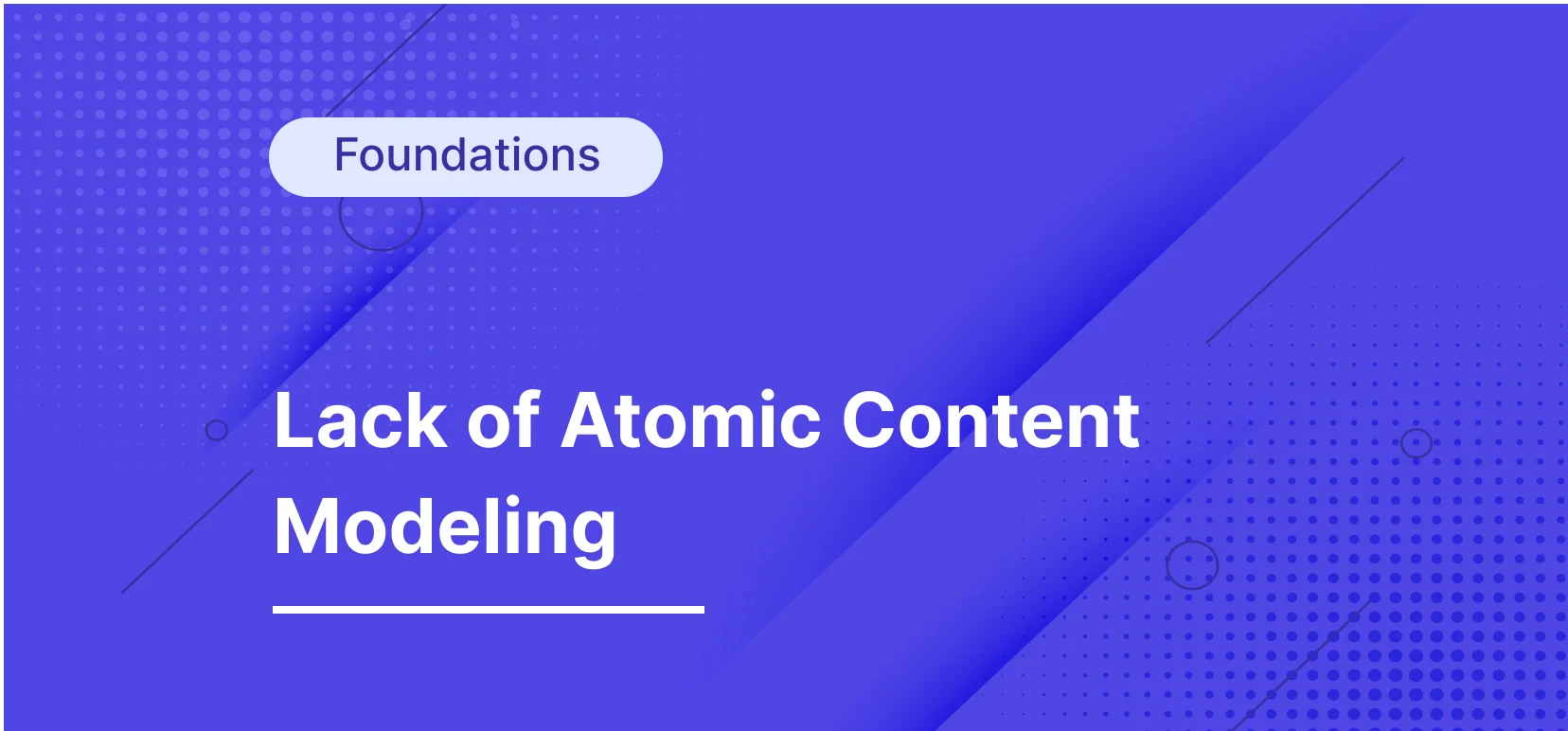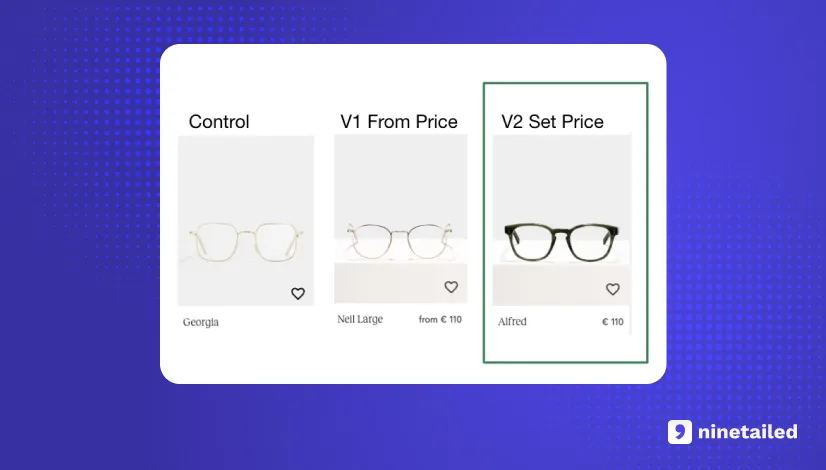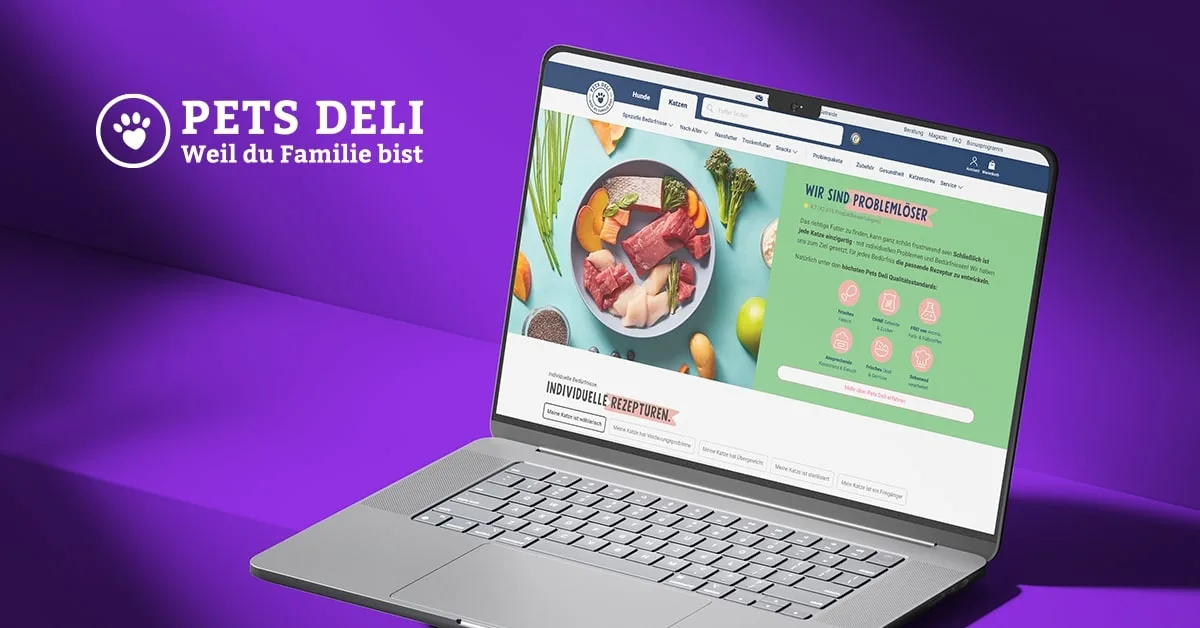- Personalization,
- Experimentation
Companies Are Failing in Personalization and Experimentation Because of a Lack of Atomic Content Modeling

Personalization and experimentation are crucial components of modern marketing strategies.
However, despite the importance of these practices, many companies struggle to implement them effectively.
One major reason for this struggle is a lack of atomic content modeling.
As companies have shifted towards personalized marketing, they have been met with a daunting challenge: how to efficiently and effectively personalize content across multiple channels and platforms.
This challenge is compounded by the fact that many organizations do not have a clear understanding of:
what content do they have
where the content is
how it can be optimized for personalization and experimentation
Without a solid understanding of their content, companies are left with no choice but to create one-off solutions for each personalization campaign or experiment. This approach can be time-consuming, costly, and ultimately ineffective.
This is where atomic content modeling comes in.
By breaking content into its smallest components and organizing it in a structured way, companies can more easily identify, manage, and optimize their content. With atomic content modeling, personalization and experimentation have become much more efficient, enabling companies to quickly and easily create campaigns and experiments that are tailored to their customers' needs.
In this playbook, you’ll explore
👉 how atomic content modeling enables personalization and experimentation
👉 challenges in implementing atomic content modeling for personalization and experimentation. And how to overcome these challenges
👉 examples of companies that have successfully used atomic content modeling for personalization and experimentation
What Is Atomic Content Modeling?
Content Modeling
Content modeling is the process of breaking down content into its individual parts or components and organizing them in a structured way.
This structured approach enables companies to more effectively manage and optimize their content, which can lead to more efficient personalization and experimentation efforts.
For example, instead of treating an entire webpage as a single piece of content, a company might break that page down into its individual components, such as headlines, images, and calls to action.
By doing so, they can more easily identify which components are most effective at driving engagement and conversion and optimize those components accordingly.
This approach can also make it easier to create new content, as companies can simply assemble existing components in new ways rather than starting from scratch each time.
Atomic Content Modeling
Atomic content modeling takes the process of content modeling one step further by breaking down content into its smallest meaningful components, or "atoms."
These atoms can then be organized into reusable patterns, or "molecules," that can be combined to create more complex content.
For example, a headline might be considered an atom, while a call-to-action might be considered a molecule made up of multiple atoms, such as a button, text, and an icon.
By breaking content down into its smallest components, companies can more easily manage and optimize their content for personalization and experimentation.
This approach allows for component-level optimization rather than page-level optimization, which can lead to more precise and effective personalization campaigns and experiments.
It also makes it easier to create new content, as companies can simply assemble existing atoms and molecules in new ways rather than starting from scratch each time.
Why Is Atomic Content Modeling Important for Personalization and Experimentation?
Component Level Personalization > Page Level Personalization
The traditional approach to personalization and experimentation has been focused on page-level optimization, treating a webpage as a single piece of content.
This approach, however, can be limiting and time-consuming.
Companies often face difficulties in identifying which components of a page are most effective at driving engagement and conversion. This can lead to one-off solutions for each personalization campaign or experiment, which can be costly and ultimately ineffective.
Atomic content modeling, on the other hand, takes the process of content modeling one step further by breaking down content into its smallest meaningful components, or "atoms." By organizing these atoms into reusable patterns, or "molecules," companies can more easily manage and optimize their content for personalization and experimentation.
The advantages of this approach are numerous. By breaking down content into its smallest components, companies can more precisely identify which components are most effective at driving engagement and conversion and optimize those components accordingly. This allows for more effective personalization campaigns and experiments, as companies can target specific components of a page rather than the entire page.
Ace & Tate - A/B/C Test for Product Pricing
One of the first tests Ace & Tate rolled out with Ninetailed was to run an A/B/C test to validate a hypothesis that showing clearer pricing earlier in the funnel will give users more confidence to proceed with a purchase.
The test ran with a variant for a ’from price’ and another with a ’fixed price’:

Although they expected higher CTR to product pages, there actually was a decline in users moving forward in the funnel.
However, when Ace & Tate dug deeper into the full funnel, they saw that in both variants, the users that moved forward had a higher propensity to complete their product configuration, and in the case of the fixed price variant, they were also 8% more likely to convert to a sale, leading to higher purchases than the control group despite the decline earlier in the funnel – a great example that sometimes it pays to look past your initial success metrics to get the full picture.
Faster Personalization Campaign and Experiment Creation
Furthermore, this approach makes it easier to create new content. Rather than starting from scratch each time, companies can simply assemble existing atoms and molecules in new ways to create fresh content.
This can lead to faster personalization campaigns and experiment creation, as well as more efficient use of resources.
Ruggable - Faster Personalization Campaign Creations
Before switching to a headless tech stack (i.e., Contentful and Ninetailed), Ruggable faced technical challenges with their in-house customer segmentation and personalization solution.
The solution was hard coded, required developer support, and broke from time to time.
Every update to personalization campaigns or audiences also needed to go through a developer, with even a simple message update taking up to one day and a promo banner requiring two full days of work.
This created an opportunity cost as developers were assigned simple tasks such as copy changes or image updates instead of focusing on more impactful projects for the business.
As this became an increasingly inefficient process, Ruggable sought out a better way to manage the content without having it buried in code – making their transition to Ninetailed an obvious choice after moving to a headless tech stack and Contentful.
The old solution was not just slow and required extensive developer support, it was also creating workflow silos.
Ninetailed enabled Ruggable to create campaigns or make changes in under an hour - usually around 30 mins. Here’s how:
With Ninetailed integrated into Contentful, you have everything needed for personalization and experimentation directly within the Contentful workflow. Therefore:
no need to learn a new tool
no need to switch to another tab
no need to create a new workflow
no need to remember another log-in
no need to create new data or organizational silos
Overall, the benefits of atomic content modeling for personalization and experimentation are clear. By enabling component-level personalization and experimentation, companies can create more effective campaigns and experiments while also simplifying the process of content creation.
The Bottom Line
Atomic content modeling is crucial to personalization and experimentation efforts, as it enables component-level optimization and faster campaign and experiment creation.
By breaking content down into its smallest components and organizing them in a structured way, companies can more easily manage and optimize their content.
This leads to the following:
🚀 more efficient personalization and experimentation efforts
🚀 as well as more effective campaigns and experiments
Therefore, companies should adopt atomic content modeling to improve their personalization and experimentation efforts.
Get in touch to learn how Ninetailed personalization, experimentation, and insights works inside your CMS

![4 Benefits of Headless A/B Testing [with Examples from Ace & Tate]](https://images.ctfassets.net/a7v91okrwwe3/1rAE9Eod5ybWUHtc9LEMLo/607bdcaf0512ec8f2af0f9f93dbe84f8/Ace___Tate_landscape.jpg?fm=webp&q=75&w=3840)